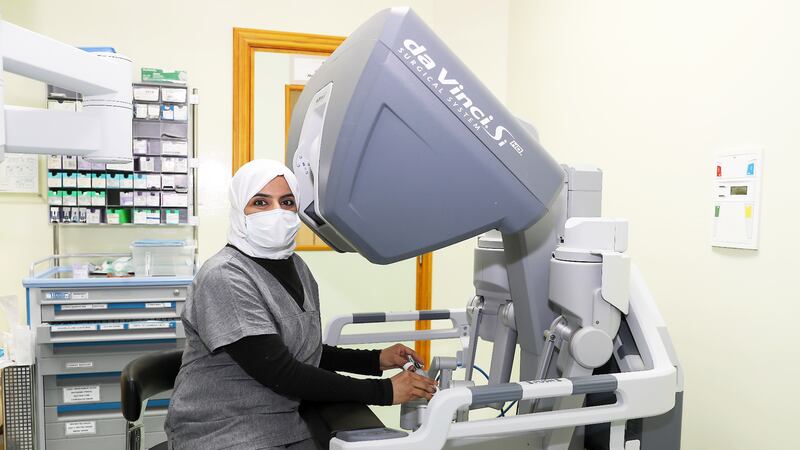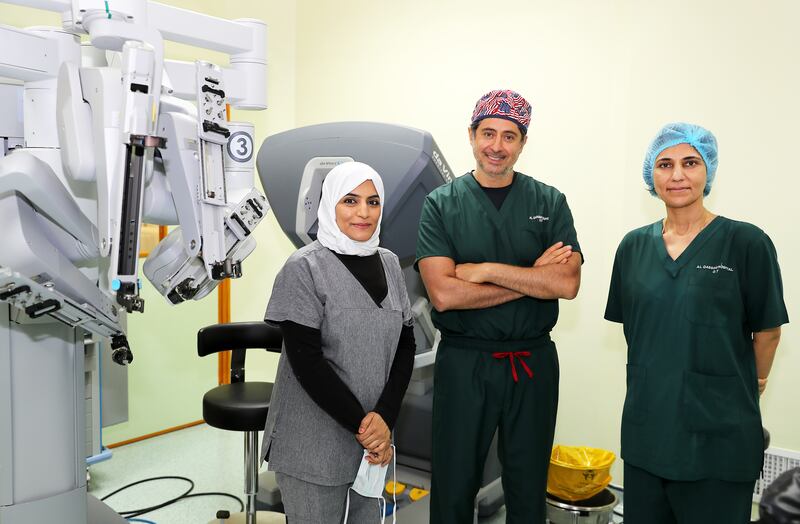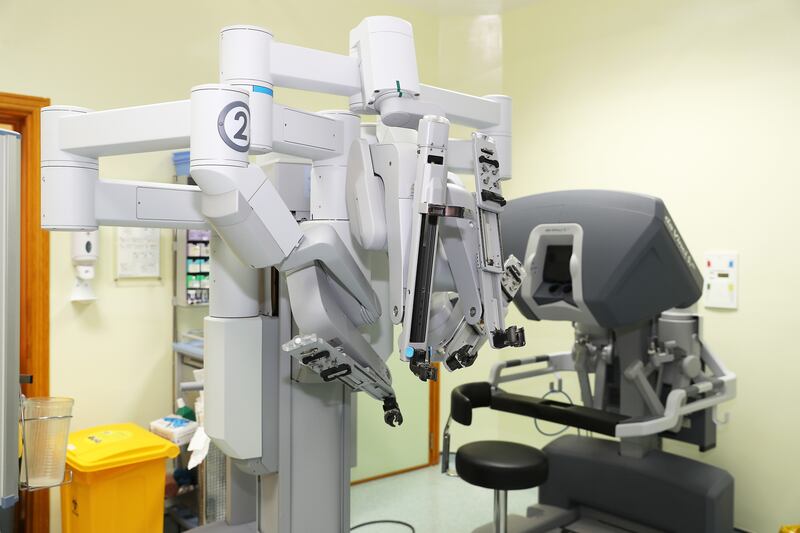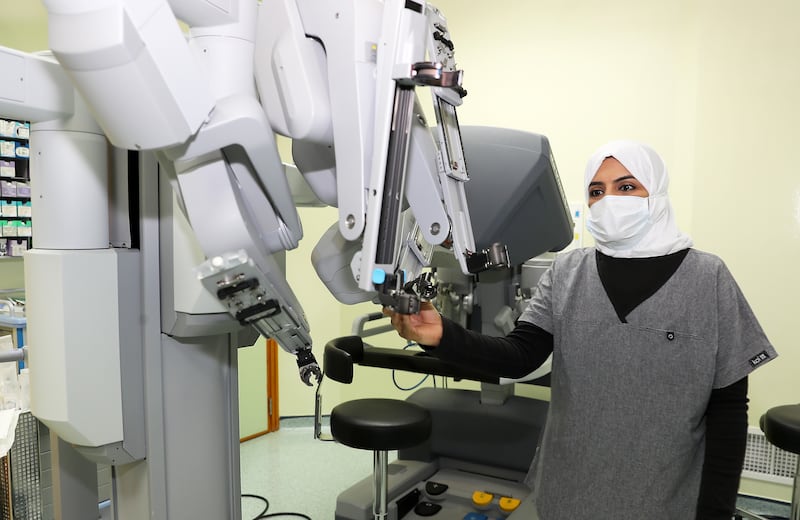Trail-blazing Mona Kashwani has told how hard work paid off after she became the first female Emirati doctor to perform robotic surgery at a government-run hospital in the UAE.
The gynaecologist works at Sharjah's Al Qassimi Women’s and Children’s Hospital, under Emirates Health Services (EHS), where she performs minimally invasive surgeries to carry out total and supra-cervical hysterectomies and to treat uterine prolapse and fibroids.
She graduated from the Queen Mary University of London in 2005 and in 2019, she took part in a course to receive training to use the da Vinci surgical system, which allows surgeons to perform complex minimally invasive surgical procedures with precision and accuracy.
Last month, she received her licence to carry out robotic surgery.
Consultant obstetricians and gynaecologists Dr Kashwani and her colleague Shalini Malhotra were nominated to join the Women Robotic Surgeons Programme.
That meant they had to spend long hours away from home and family to master the skill.
They were guided by Dr Labib Riachi, an American specialist who has extended experience in advanced robotic gynaecological surgery.
It included studying online material about the form of alternative surgery and carrying out exercises on simulators.
“There was a vision to create what is more of a fellowship programme to teach Emirati and expatriate surgeons who can contribute to the community,” said Dr Riachi.
“The joy of that mission having accomplished its goal was with Dr Mona obtaining her licence.”
Covid-19 halted their training for about six months during which they did not operate.
Their return after coronavirus restrictions were lifted meant more intensive training and surgery practice.
Dr Kashwani said that despite having two small children — one born only weeks after the programme kicked off — did not deter her.
“I spent countless hours after my shift studying how the robotic system operates and using the surgical simulator for training," she said.
She said they had to keep on practising with the simulators because "if we detached from them for long periods", the skills learnt would have been gradually lost.
After she finished her training, she headed to Strasbourg in France last May where she was tested by IRCAD Training Centre on the use of advanced da Vinci surgical robot.
She received her licence and certificate that same month.
When the programme began, patients were very hesitant but now they show more faith in the new technology, she said.
“It took a lot of struggle convincing patients but the way our population of patients has increased, we now have a waiting list,” said Dr Shalini Malhotra, who received her licence in 2020 after completing the programme.
“The team gets reference of patients from the entire Northern Emirates, which EHS covers, and have even operated on international patients.”
Women who used to travel abroad for treatment now come to Al Qassimi Hospital.
The team members have performed 207 robotic surgeries since the programme began and hope more people will show confidence in the ground-breaking technology.
“This is one of the busiest gynaecological robotic surgeries in the Middle East,” said Dr Riachi, who travels throughout the region to perform the complex operations.
The programme will continue to help surgeons to embrace technology to boost patient care.
“It is important to spread the knowledge about minimal-invasive surgery so patients can go home faster, take care of their families and have less pain,” said Dr Riachi.
Most of the patients spent less than two days in hospital, with many of them waking up the next morning feeling well enough to go home.
Dr Riachi said: “Operating with this sense of precision makes complicated cases less complicated, which means improving health care, and safer and faster recovery."
The next phase of the technology is expected to introduce a full active robot.
“We now do robotic-assisted minimally invasive surgery because the robot we use follows orders,” said Dr Riachi.
“The near future promises a fully active robot, which is in line with the country and EHS’s vision to have artificial intelligence integrated into the medical practice.”
The first procedure was carried out in 2014 at Al Qassimi Hospital, where robots were used for catheterisation and cardiac surgery, Wam reported.
“The approach allows more departments to work together on certain cases,” said Dr Riachi. "For example, if a patient undergoing an operation and was found in need of a general surgeon’s intervention, the surgeon would be called to take part in the robotic surgery.
“This is in the best interest of the patient.”










